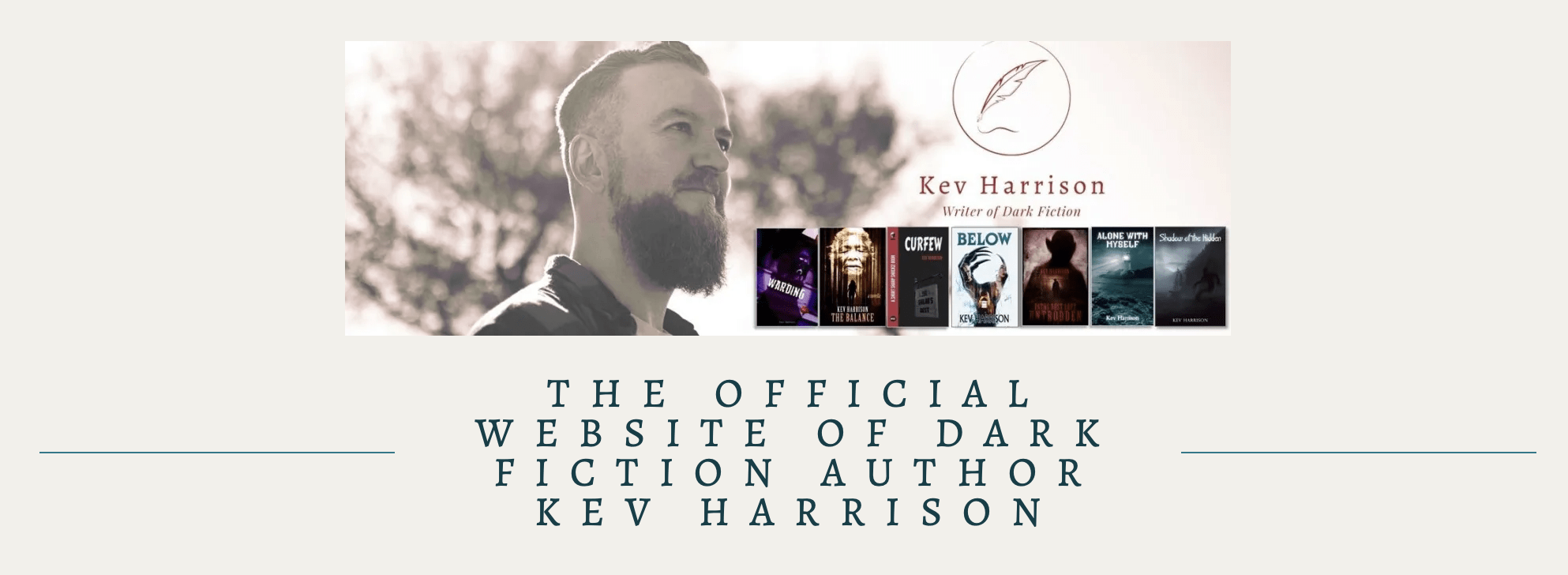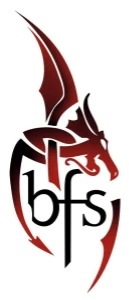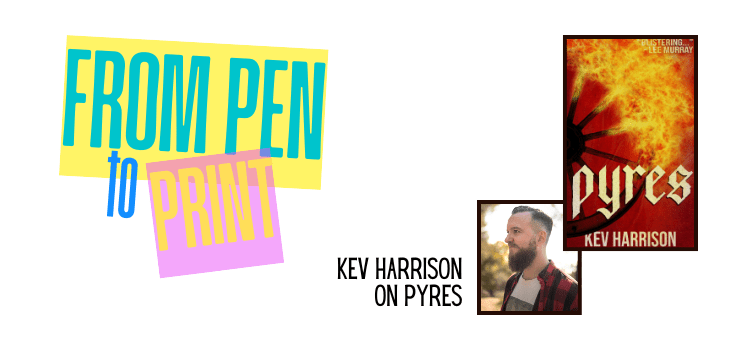We’re continuing our Spooktober focus on the journey of horror’s latest and greatest with Kev Harrison’s Pyres, out now via Northern Republic
Name: Kev Harrison (he/him)
Based in: Lisbon, Portugal
What genres/subgenres are you drawn to?
I like a wide variety of dark fiction, especially quiet horror and elements of the supernatural
Is writing your full-time focus, or do you have a day job as well? What do you do?
I’m an English teacher for my day job, and I’ve recently increased my hours back to full time after a number of years where the teaching has been part time except for the summer months.
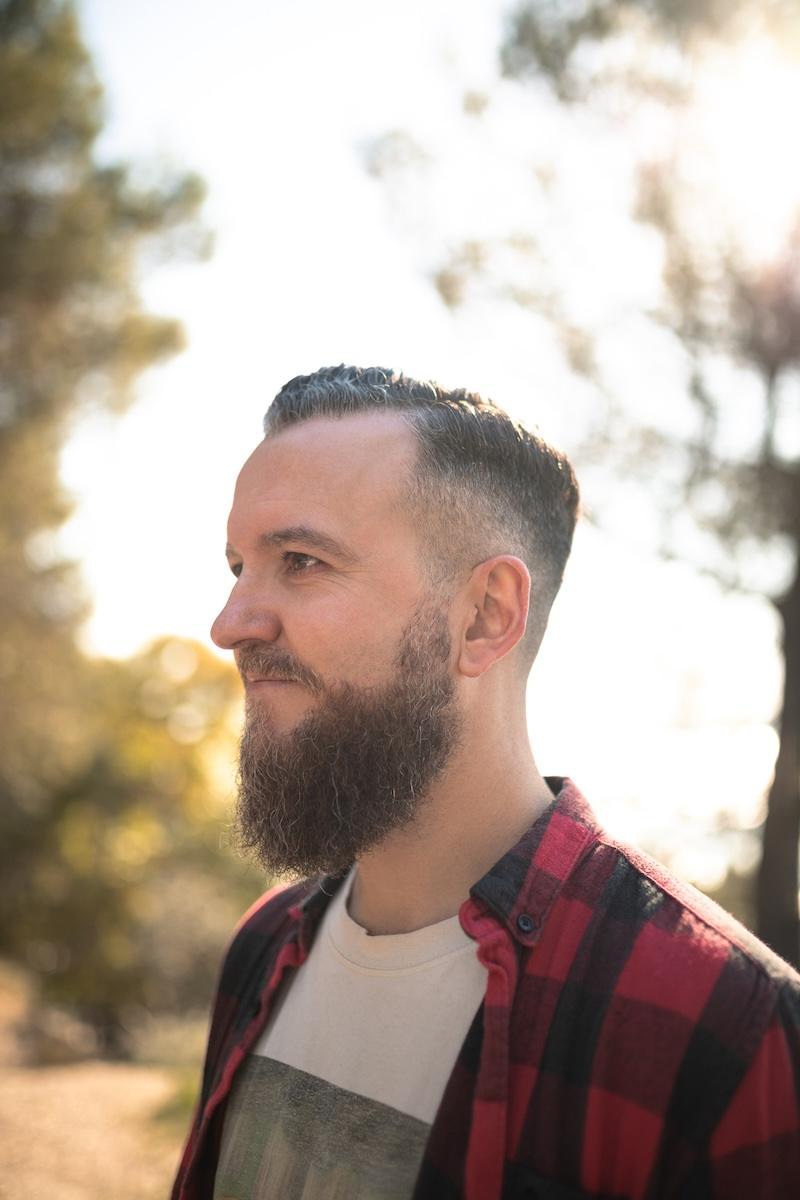
The Book: From Pen to Print
What was the genesis of this book? Where did you get the idea from?
I was randomly online one day when I saw a post about spirit painting. I’d never heard of the concept before and I quickly found myself rolling down the rabbit hole, even finding some ‘real life’ spirit painters online, selling their spirit-inspired works. I had a quick look around but discovered, with a few notable exceptions, it was an area of supernatural horror that had not been touched on much. Then I just needed an inciting incident to spark the story to life. I started thinking about the life of a spirit painter—where they might reside and what their family connections might be. Becky—the spirit painter’s sister—showed up in a planning session one morning and the book quickly spiralled from there.
How many drafts did you go through before you felt it was ready to query? How long did that take you?
I’m an edit as I go type of writer, following Joe Lansdale’s tried and tested method of reading back over what I did the day before and tidying it up a bit before I start with new words. It’s a way of pulling me back into the story and I find it enables me to keep the voice consistent. Because of this, my “first draft” is really something like a very closely scrutinised second. After this, I gave it another pass, sent the book to beta readers and redrafted based on their feedback. Finally, the wonderful Elle Turpitt worked her editing magic and I went back in with the scalpel to refine it more. So … 5(ish)?
Did you work with beta and/or sensitivity readers? How did you find them? How did you incorporate their feedback?
I swear by some sort of beta reading for everything I do. Sometimes the tiniest observation can make or break a story. I tend to see the views of multiple readers and then see what the consensus is before acting, most of the time. With individual comments which others don’t echo, you have to ask yourself what is a genuine problem with the story, and what is perhaps just a style choice. As for sensitivity readers, I didn’t employ any as such here, but with two female protagonists and a queer element to one of their back stories, it was important to me to use beta readers of similar backgrounds and to ask them to be frank with me about whether there were any issues with my male writer’s POV. Thankfully—and I think this owes a lot to the fact that I’ve often got along with women better than men—there was no sense that I was getting this stuff wrong on this occasion.
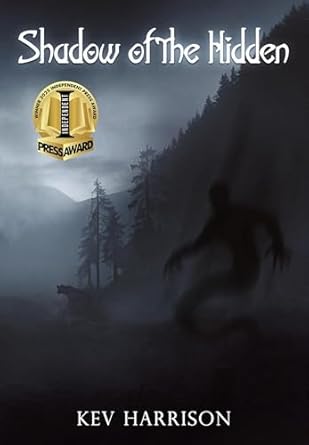
What was your querying process like? How long did it take?
I decided to release this book on an indie basis, and my friend and superb writer in his own right, Dan Howarth, allowed me to use his Northern Republic imprint to release the book through. My last novel, Shadow of the Hidden (pictured; it won the 2025 Independent Press Award for Horror), was released through Brigids Gate Press, and I’ve had a wonderful experience with them. But, having had a large gap between my novella, Below, and Shadow of the Hidden, I was conscious that I wanted to get the next book out this year, which meant doing it myself.
Once it was in the hands of your publisher, what was the process to get it ready for release?
The pre-release stage was tricky, not least because I was teaching on an intensive university course in the UK from June to September—one which is great to do because of all the wonderful students I meet, but also which drains my soul of energy. Luckily, I had enlisted Paul Stephenson of The Hollow Stone to produce the incredibly eye-catching cover, and that was a painless process with excellent results. I was also able to call upon one of the best creators of working class horror, Adam Hulse, for the introduction, and some amazing creatives for blurbs: TC Parker, Beverley Lee, Dan Howarth, Michael David Wilson of This is Horror, and the living legend that is Lee Murray. When people like that are saying good things about a book, you can’t ask for much more.
And now your book is out in the world! How are you feeling?
I’m feeling incredibly excited. This book was substantially written at my face to face writing club in Lisbon. And, though many of them are not horror fans per se, it was clear there was an energy about this tale which pulled them in whenever I shared from it. That, and the early reaction from early readers, tells me that if people pick this one up, they’re likely to enjoy it.
What would you like us to know about this book?
First, that I’m confident it’s my best work to date. I feel like the story is tighter, the prose better, the character work more detailed and real-feeling. Secondly, that it is a response to the world we’re living in right now. A world which, sadly, is trying to apportion blame for all of society’s woes at migration. We’ve been here before. Happily not in my lifetime. But Pyres stares that rhetoric straight in the face.
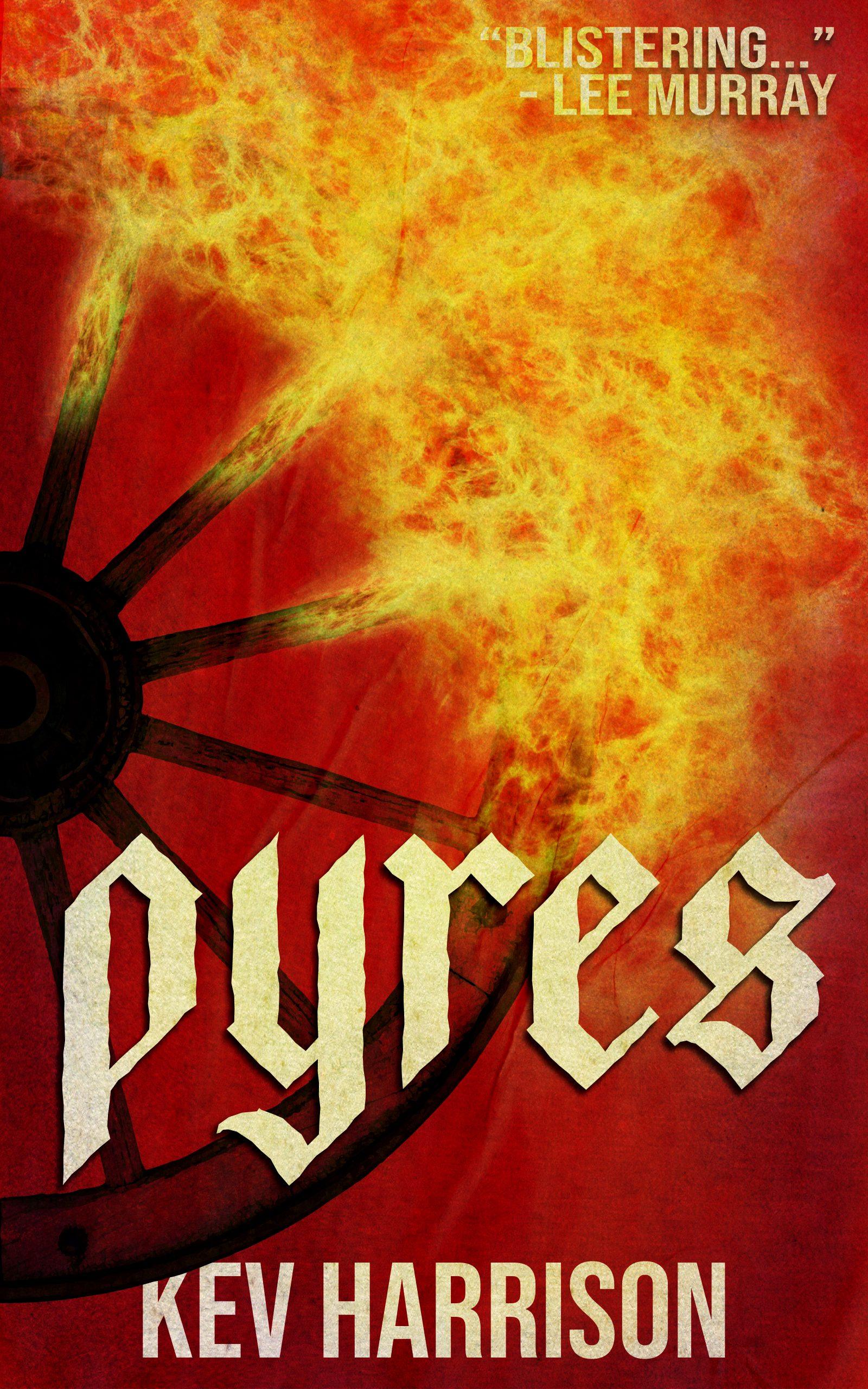
Who’s the ideal reader for this one? What sort of things do they like to read about?
Anyone who likes quiet horror—with some moments of more visceral horror, of course. There’s also a fair amount of mystery in my work, too. Something which was pointed out by a number of readers about my earlier works and I’m happily leaning into now.
Your writing process
Are you a plotter or pantser or somewhere in between? How do you do your first draft?
I usually have specific milestones I know I want to hit, and the characters lead me from one to the next however they see fit.
How do you approach writing? Are you the type or writer who needs to treat it like a job? Is there a particular time of day you find best for you to write?
I definitely find writing is something I do better earlier in the day. If I’ve been at work already, I can happily throw myself into editing, but creating new words is a far more fruitful process for me at the beginning of the day.

Geek out about stationery: do you use a notebook? A specific type of pen? Or are you computer all the way?
I can barely write with a pen, and when I do, I can’t really read what I’ve written. So, computer, tablet, phone, even voice notes are used at various times. I used to be a data analyst before I was a teacher and there was a time I don’t think I even held a pen for about 5 or 6 years.
Is any of that different for editing?
Nope!
Where do you work? Do you have a comfy, creative space at home or are you someone who has to grab the moment wherever it comes?
I use a poang chair from Ikea (generic version pictured) with my laptop at home. It rocks gently as I write and also affords me a view out at the ocean. It’s also a favourite place for my cats to come over and demand love, which gives my mind a quick break every half an hour or so.
What’s your writing soundtrack?
Often silence or the sound of the wind off the Atlantic. But sometimes, I’ll put on some dark instrumental music. The bands We Lost The Sea and Long Distance Calling often feature.
Do you have a writing ritual?
Not really. I just need to have at least thirty minutes free so I can read over my previous words before diving in.
Where can we follow you / find out more about your work?
I have a website at www.kevharrisonfiction.com, but these days, I more often update my monthly newsletter; people can get a free supernatural horror novelette when they subscribe. I’m pretty meticulous about only sending one a month unless there are really exceptional circumstances, so I won’t be clogging inboxes with endless posts. Other than that, I’m on Instagram as @mrevilkev and Bluesky as @kevharrison.bsky.social
